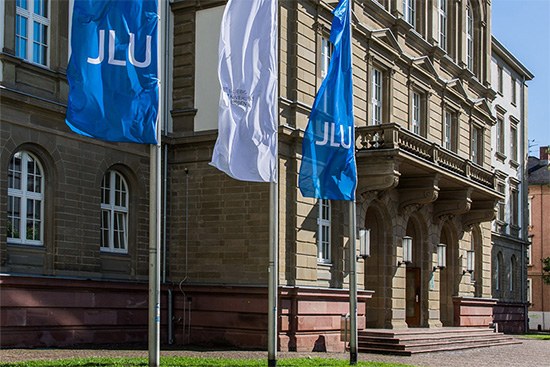Research Profile Areas

The research profile of Justus Liebig University Giessen is currently divided into three levels with two internationally visible focus areas, five leading potential areas in collaborative research and 28 accent areas in the departments. In terms of research, JLU is characterized by both very large areas with strong collaborative research activities and smaller units with strong research activities. The JLU's collaborative research profile is characterized by the focus and potential areas with national and international visibility in cutting-edge research. These areas are being continuously expanded.
Focus Areas
Focus areas fulfill the classic performance indicators of cutting-edge research, they have outstanding performance and special international appeal.
|
|
Involved faculties | ||||||||||
| 01 | 02 | 03 | 04 | 05 | 06 | 07 | 08 | 09 | 10 | 11 | |
| Cardiopulmonary system (Heart/Lungs) | ● | ● | |||||||||
| Mechanisms of perception and adaptation | ● | ● | ● | ||||||||
Areas of Potential
Areas of potential are research alliances with strong external cooperation partners that fulfill the key performance parameters of internationally visible cutting-edge research.
|
|
Involved faculties | ||||||||||
| 01 | 02 | 03 | 04 | 05 | 06 | 07 | 08 | 09 | 10 | 11 | |
| Bioressources | ● | ● | |||||||||
| Infections, inflammations and active ingredients | ● | ● | ● | ● | |||||||
| Smallest particles | ● | ||||||||||
| Culture—Conflict—Security (Focus: Eastern Europe) |
● | ● | ● | ● | |||||||
| Material and Energy (Focus: storage materials) |
● | ● | |||||||||
Accent Areas
JLU gives great importance to the accent areas of the faculties. They are characterized by a particular (individual) research strength or represent a particular strategic importance for the university. The accent areas of the faculties often range between individual and collaborative research.
|
|
Involved faculties | ||||||||||
|
|
01 | 02 | 03 | 04 | 05 | 06 | 07 | 08 | 09 | 10 | 11 |
| 3R research | ● | ● | |||||||||
| Education, media and interactivity | ● | ● | ● | ||||||||
| Education in the CV | ● | ||||||||||
| Biodiversity and global change | ● | ● | ● | ||||||||
| Data-driven Economy | ● | ● | ● | ● | |||||||
| Thinking, learning and working | ● | ||||||||||
| e-Health | ● | ● | |||||||||
| Experimental and applied neuroscience | ● | ● | ● | ● | ● | ||||||
| Nutrition of humans and animals | ● | ● | ● | ● | |||||||
| Experimental and applied neuroscience | ● | ● | ● | ● | ● | ||||||
| Native wildlife | ● | ● | |||||||||
| Holocaust and camp literature | ● | ● | |||||||||
| Innovative crop production | ● | ● | |||||||||
| Lie-theory, geometry and differential equations | ● | ||||||||||
| Metagenomics | ● | ● | ● | ● | |||||||
| Migration and human rights | ● | ● | ● | ● | ● | ||||||
| Sustainable syntheses and processes | ● | ● | |||||||||
| Physics and technology for space applications | ● | ● | |||||||||
| Post-Colonial Studies | ● | ||||||||||
| Mental and physical health across the age range | ● | ||||||||||
| Repair and regeneration | ● | ● | |||||||||
| Reproduction | ● | ● | |||||||||
| Responsible Leadership & Corporate Governance | ● | ||||||||||
| RNA biochemistry and regulation of gene expression | ● | ● | ● | ||||||||
| Study of Culture | ● | ● | ● | ||||||||
| Theology(s), diversity and society | ● | ● | ● | ||||||||
| Theater theory and practice | ● | ● | ● | ||||||||
| Translational oncology | ● | ||||||||||
| Visualities: contexts and framings | ● | ● | ● | ||||||||
| Spaces of knowledge in literature before 1600 | ● | ● | ● | ||||||||
Image Sources: Cover Image: Sebastian Ringleb
